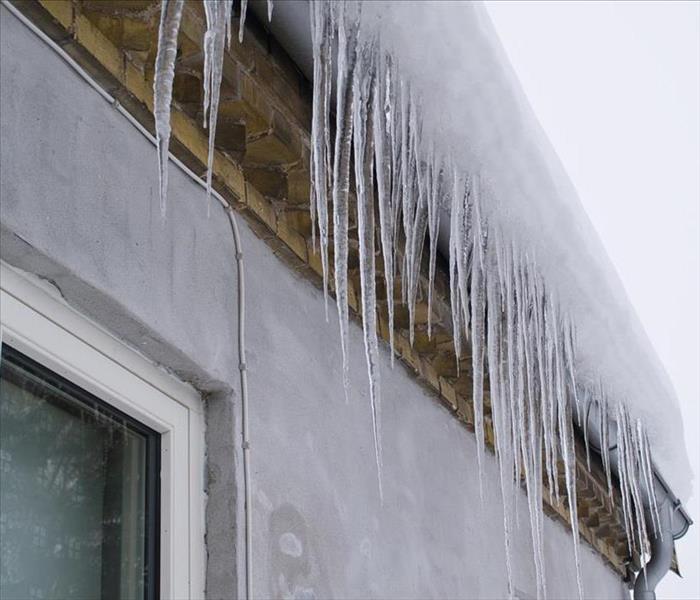How Ice Dams Can Lead to Mold in Your Building
8/14/2020 (Permalink)
How Ice Dams Can Lead to Mold in Your Building
Snowstorms and cold weather bring various hazards to your Deer Park, OH, commercial property. You do not just have to worry about burst pipes or floods. An ice dam could also develop on your roof.
Snow will build up on top of your building after a storm. If that snow is above the heated part of your property, it will start to melt. As this water trickles down the roof, it may reach an uninsulated area. It will then freeze into ice that blocks additional water from flowing off the roof. Since this water has nowhere else to go, it will start to leak into your property. This will create wet:
- Wall studs
- Sheetrock
- Insulation
The added moisture subsequently makes the area behind your walls a breeding ground for black mold. If you notice an ice dam on your roof, you should remove it promptly.
Eliminating Ice Dams
There are several ways to get rid of ice dams without having to climb onto the roof. Try using a long rake to break up the pile of ice. You can also create a channel in the dam that allows the water to flow into the gutters. All you need is pantyhose that have been filled with an ice melter.
Preventing Ice Dams
There are also steps you can take to prevent ice dams from forming in the first place. Consider adding insulation to the top level of your building. This should reduce the chances of water on the roof freezing. Adjusting the bathroom and kitchen ducts so that they lead outside the property should help, as well.
An ice dam can cause moisture from the roof to leak back into your building. If this moisture is left unaddressed, it could promote mold growth within your walls or insulation. You should try to remove ice dams on your property as soon as possible. You can then call mold cleanup and remediation specialists to make sure any spores have been eliminated.






 24/7 Emergency Service
24/7 Emergency Service
